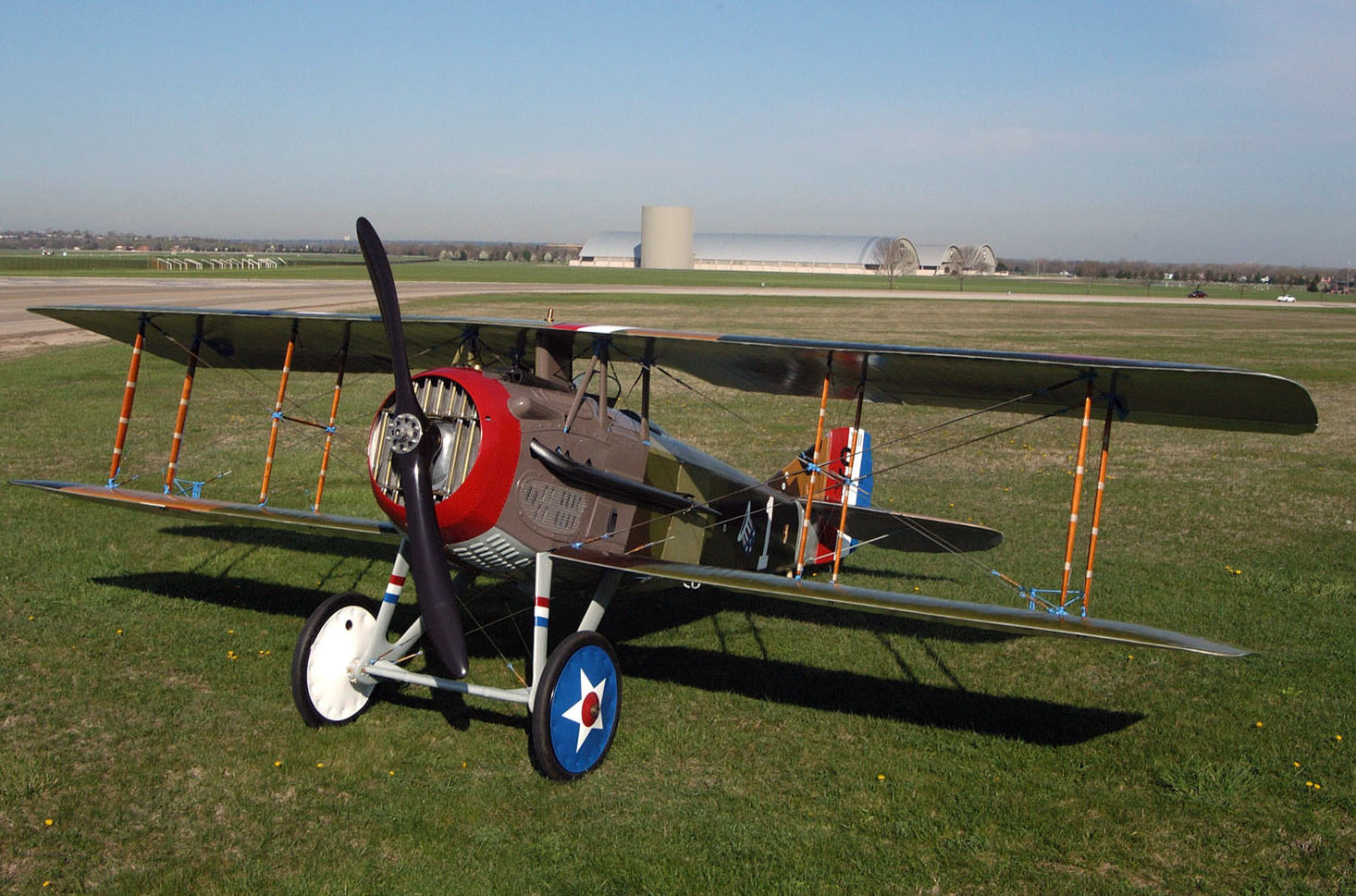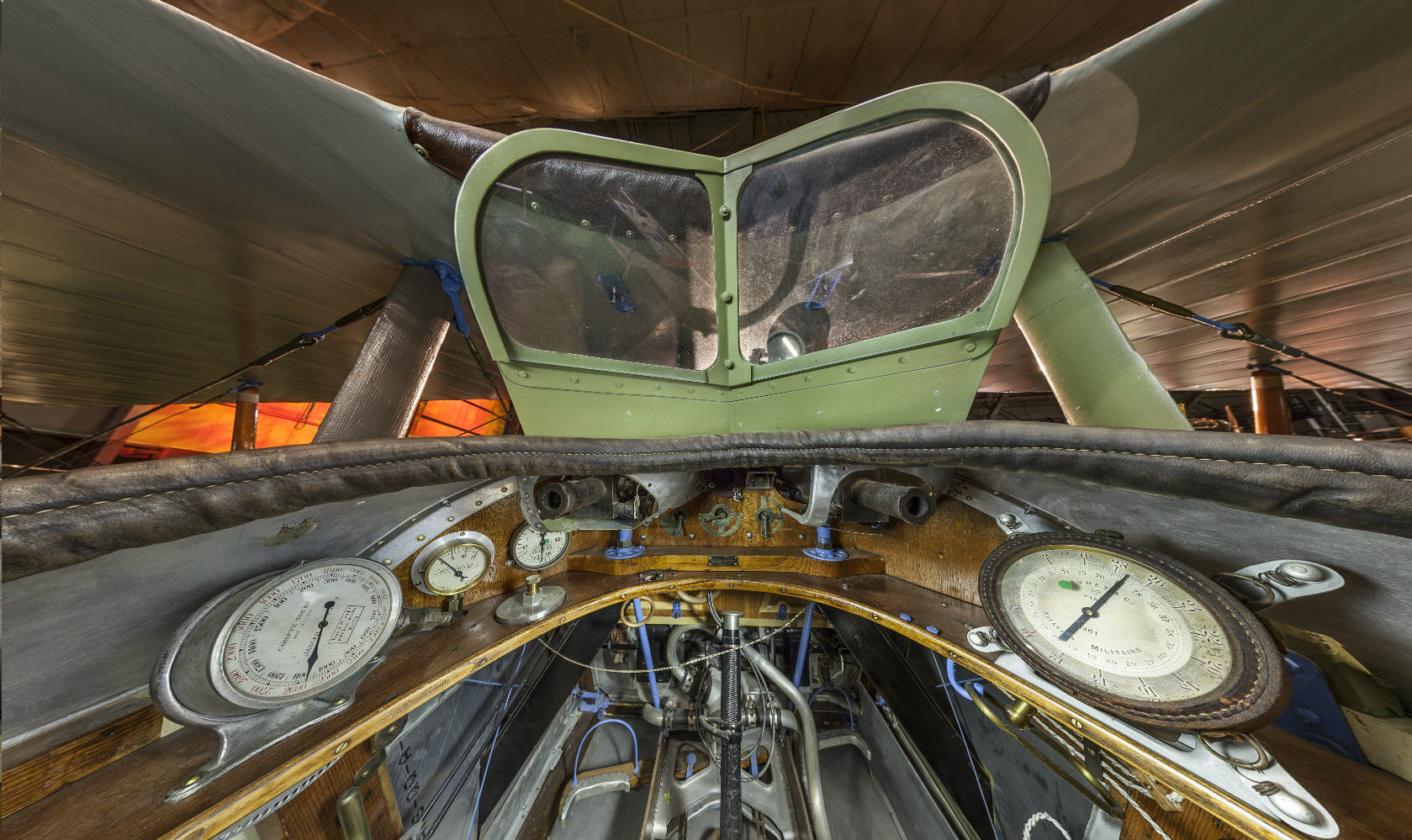In 1916 a new generation of German fighters threatened to win air superiority over the Western Front. The French aircraft company, Société pour l'Aviation et ses Dérives (SPAD), responded by developing a replacement for its highly successful SPAD VII. Essentially a larger version of the SPAD VII with a more powerful V-8 Hispano-Suiza engine, the prototype SPAD XIII C.1 ["C" designating Chasseur (fighter) and "1" indicating one aircrew] first flew in March 1917.
With its 220-hp engine, the SPAD XIII reached a top speed of 135 mph — about 10 mph faster than the new German fighters. It carried two .303-cal. Vickers machine guns mounted above the engine. Each gun had 400 rounds of ammunition and the pilot could fire the guns separately or together. Technical problems hampered production until late 1917, but nine different companies built a total of 8,472 SPAD XIIIs by the time production ceased in 1919.
Click on Image to Expand

Since the United States entered World War I without a combat-ready fighter of its own, the U.S. Army Air Service obtained fighters built by the Allies. After the Nieuport 28 proved unsuitable, the Air Service adopted the SPAD XIII as its primary fighter. By the war's end, the Air Service had accepted 893 SPAD XIIIs from the French, and these aircraft equipped 15 of the 16 American fighter squadrons. Today, Americans are most familiar with the SPAD XIII because many American aces — like Rickenbacker and Luke — flew them during WWI. Now look at the SPAD from the pilot's point of view.
Click on Image to Take Virtual Cockpit Tour


No comments:
Post a Comment